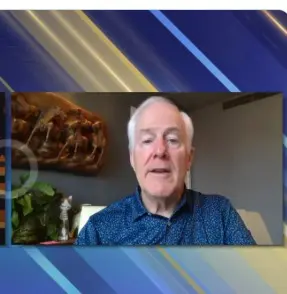 Expansion of the Scope of Iran Metals Sanctions Targeting Iran’s Nuclear, Military, and Ballistic Missile Programs and the IRGC
Expansion of the Scope of Iran Metals Sanctions Targeting Iran’s Nuclear, Military, and Ballistic Missile Programs and the IRGC
US Department of State, July 30, 2020
Iran’s nuclear, ballistic missile, and military programs pose a grave threat to international peace and security. To address these threats, I am announcing a major expansion of the scope of State Department-administered Iran metals-related sanctions. Today, the State Department is identifying 22 specific materials used in connection with Iran’s nuclear, military, or ballistic missile programs. Those who knowingly transfer such materials to Iran are now sanctionable pursuant to Section 1245 of the Iranian Freedom and Counter-Proliferation Act.
Under the same provision of law, I am continuing my determination that the Islamic Revolutionary Guard Corps (IRGC) controls Iran’s construction sector. The IRGC’s construction firm and many of its subsidiaries remain sanctioned by the United Nations because they were directly involved in the construction of the uranium enrichment site at Fordow. As a result of this IRGC determination, any knowing transfer of certain materials, including graphite or raw or semi-finished metals, to or from Iran to be used in connection with the construction sector of Iran remains sanctionable.
The 22 materials I have determined are used in connection with Iran’s nuclear, military, or ballistic missile programs are:
ALUMINIUM 319, ALUMINIUM 1100, ALUMINIUM 225, ALUMINIUM 6063, ALUMINIUM 6082, ALUMINIUM 7075, ALUMINIUM BROZE, ALLOY UNS C63600 (CDA alloy 636), ALUMINIUM OXIDE (Al2O3), STEEL 302, STEEL 4130, STAINLESS STEEL 321, STAINLESS STEEL 316, A877 STEEL, A228 STEEL, 100Cr6-52100 STEEL, 350 MARAGING STEEL (also known as MARAGING STEEL350), 300 MARAGING STEEL (also known as MARAGING STEEL300), UNS Cl7200-TDO1 [BERYLLIUM COPPER], UNS C37000 – CuZn38Pb1, TUNGSTEN COPPER, ALUMINIUM POWDER with purity above 98 percent
Click to read more
 Iran Terrorist on Trial in Belgium
Iran Terrorist on Trial in Belgium
Iran Focus, August 3, 2020
An Iranian so-called “diplomat” Assadollah Assadi had his second court hearing on July 30, in his trial for attempting to bomb the 2018 Free Iran gathering in Paris.
The plot was thwarted by European police, but this still marks the first time that an Iranian diplomat has been put on trial in Europe for a direct role in terrorism and the outcome will be an important precedent.
Assadi, the operative charged with executing the plot by the Iranian Intelligence Ministry, did not attend the trial based on instructions from his superior agents, but the three other operatives hired by Assadi to actually carry out the plot were present, including a Belgian-Iranian couple and a man arrested in France.
Assadi – Iran’s chief intelligence officer at the Vienna embassy – supervised all Iranian intelligence missions in Europe; particularly terrorism and spying on People’s Mojahedin Organization of Iran (PMOI/MEK) and its supporters. He is being charged for approaching the Iranian couple in Belgium and giving them the 500 grams of TATP explosives that would have put the lives of 100,000 people in jeopardy if it was used.
Over the past two years, the regime has done its best to have Assadi released, using diplomatic pressure, economic incentive, hostage-taking, and terror threats, but none of it worked, so the regime has opted to decrease news of Assadi’s trial in its state-run media.
The Iranian regime attempted to bomb the rally because mullahs were infuriated that the MEK had relocated to Albania from Iraq and terrified of another uprising by the Iranian people, so they tried to assassinate opposition Leader Maryam Rajavi.
At the 2020 Free Iran Summit, Rajavi said that this trial was necessary, but that the international community should also hold the mullahs in Iran responsible for their role in the plot, particularly supreme leader Ali Khamenei, President Hassan Rouhani, foreign minister Javad Zarif, and Intelligence Minister Mahmoud Alavi.
She and others highlighted the need for closing Iranian embassies and expelling the diplomats. Previously, she advocated for extending the arms embargo on Iran that is set to expire in October, as well as restoring six UN Security Council resolutions against the regime.
Click to read more
 One person is dying of COVID-19 every seven minutes in Iran: state TV
One person is dying of COVID-19 every seven minutes in Iran: state TV
Reuters, August 3, 2020
DUBAI (Reuters) – One person is dying from COVID-19 every seven minutes in Iran, state television said on Monday, as the Health Ministry reported 215 new deaths from the disease and state media warned of a lack of proper social distancing.
Health Ministry spokesman Sima Sadat Lari was quoted by the state TV as saying the 215 deaths in the past 24 hours took the combined death toll to 17,405 in Iran, and the number of confirmed cases rose by 2,598 to 312,035.
Some experts have doubted the accuracy of Iran’s official coronavirus tolls. A report by the Iranian parliament’s research centre in April suggested that the coronavirus tolls might be almost twice as many as those announced by the health ministry.
The report said that Iran’s official coronavirus figures were based only on the number of deaths in hospitals and those who had already tested positive for the coronavirus.
British broadcaster BBC reported on Monday that, based on data from an anonymous source, the number of deaths in Iran might be three times higher than officially reported. Iranian health authorities denied the report and said there had been no cover-up.
With COVID-19 deaths surging since restrictions were eased in mid-April, Iranian authorities have said measures to curb the spread of COVID-19 will be reimposed if health regulations are not observed. Since last month, wearing face masks in public places and covered spaces has been mandatory.
Iran’s National Coronavirus Combat Taskforce was expected to announce later on Monday whether nationwide university entrance examinations, with over 1 million participants, will take place in August. Many Iranians have called on social media for the examinations to be postponed.
Click to read more
 Strikes In Iran’s Oil Sector Continue And Expand To Other Industries
Strikes In Iran’s Oil Sector Continue And Expand To Other Industries
Radio Farda, August 3, 2020
Workers in various industrial sectors in Iran, including oil, gas and petrochemical industries, continued their strikes on Sunday and Monday, amid worsening economic condition and high inflation.
According to reports published on social networks and unofficial trade unions, the workers at several refineries and petrochemical companies in the provinces of Khuzestan, Bushehr, Hormozgan, and Fars entered their second day of the strike.
Workers at Abadan, Parsian and Qeshm refineries, as well as Lamerd Petrochemical and phases 22 and 24 of South Pars gas fields started their strikes on Saturday. However, reports say the workers at Fujaireh, Kangan, and Pars Petrochemical refineries have also gone on strike on Sunday. Furthermore, workers in phase 14 of South Pars have joined the action.
Strikes continued on Monday, August 3 at the Kangan refinery and Parsian oil production complex.
The protesting workers demand their overdue wages and improved working conditions and reduced working hours in the heat of 50 degrees Celsius (122 Fahrenheit) in southern parts of Iran.
Less than a week ago, Ebrahim Arabzadeh, a petrochemical worker in Mahshahr, died of heatstroke. Another worker in the Yadavaran Hoveyzeh oil field, Emran Roshani Moqaddam, committed suicide on June 12 to protest overdue wages.
Based on the footage and video reports circulating on social networks, the striking workers, most of whom are contract workers, have assembled peacefully at their workplaces or dormitories.
The state-run Iran Labor News Agency, ILNA, also reported that about 200 workers at Heavy Equipment Production Company (HEPCO), gathered for the second consecutive day on Sunday, at the company premises, in the central city of Arak.
Workers at HEPCO are protesting “confusion and uncertainty over their job description and a sharp drop in the production capacity of their plant.
Like several other industrial complexes before the downfall of the pro-West King Mohammad Reza Pahlavi and establishment of the Islamic Republic (1979), HEPCO was a lucrative conglomerate. It was established and registered in 1972, with the intention of assembly & production of heavy equipment.
Click to read more
Iran Protests & more




 Iran Accidentally Sinks Fake Aircraft Carrier In Wrong Place
Iran Accidentally Sinks Fake Aircraft Carrier In Wrong Place
Forbes, August 3, 2020
The saga of Iran’s fake aircraft carrier, intended as a propaganda coup, is turning into an own goal. The Iranian armed forces, particularly the IRGC-N (Islamic Revolutionary Guard Corps Navy) delight in attacking the mock U.S. Navy aircraft carrier. It makes their war games more dramatic. And it may be intended to symbolize that they could, if called upon, sink an American carrier. The carrier itself, actually an elaborate target barge, is not intended to sink, however. Instead it is reusable and has been symbolically ‘destroyed’ twice already. But now it really has sunk. And in very much the wrong place.
The stricken carrier can be seen, capsized, in commercial satellite imagery. The dramatic view above has been shared by Aurora Intel and shows PLEIADES satellite imagery (material © CNES 2020, Distribution Airbus DS, all rights reserved. Acquired through ShadowBreak Intl). The image is taken from above, and shows that the carrier is listing at about 90 degrees. The starboard (right-hand) side is facing upwards. As you look at the image, the carrier was heading from right to left of the image when it succumbed to the waves.
It began to sink when it was being towed back to Bandar Abbas after being attacked. Sebastien Roblin wrote for Forbes on July 31 that the vessel was ‘listing steeply to one side, with nearly half of the flight deck submerged.” Since then the situation has deteriorated.
The carrier is very large, but still much smaller than the U.S. Navy super-carriers it is designed to represent. We know that it is designed to symbolize U.S. carriers because the mock aircraft have U.S. Navy markings painted into them. It was built in 2013-14 and then dramatically ‘destroyed’ during war games in February 2015. Recently it has been repaired in Bandar Abbas and towed back out to sea. It was then attacked again on July 28 as part of the ‘Prophet Mohammed 14th’ war games. It was circled by speed boats, likely including some of the 100 new vessels unveiled in June, and hit by missiles.
The location of the sinking will likely create a serious headache for the Iranian Navy and IRGC-N. It is just outside the harbor entrance to Bandar Abbas, near to the main approach channel.
Click to read more
 Iran Human Rights Monitor Monthly Report – July 2020
Iran Human Rights Monitor Monthly Report – July 2020
Iran News Update, July 26, 2020
July 2020 was marked by the Iranian regime’s pervasive use of the death penalty and torture, suppression of freedom of expression, and discrimination against ethnic and religious minorities.
Despite having to deal with a catastrophic outbreak of Covid-19, which has killed more than 80,000 people, the Iranian authorities have not stopped their horrendous executions.
The clerical regime executed an average of one person per day in the month of July, to further step up the atmosphere of repression in society. Most notable were the executions of two Kurdish political prisoners and the hanging execution of a man, married with two children, for drinking alcohol. Death sentences issued for protesters arrested during the protests in December 2017 and November 2019 aroused public outrage in the country.
Heavy-handed treatment of political prisoners, restricting freedom of religion and belief and cruel conditions in many prisons and detention facilities are also stark indications of mounting repression in Iran.
The regime has also geared up its efforts to counter the wave of discontent by handing down heavy prison sentences to dissidents and apprehending rights activists.
Death penalty
The clerical regime executed at least 31 people in July. Twenty-four of the executions were related to murder, while the rest were related to drug-trafficking, security and politically motivated charges.
Three men were also executed in late July for rape charges in the western city of Hamedan.
Amnesty International said on July 15 that “There has been an alarming escalation in use of the death penalty against protesters, dissidents and members of minority groups in Iran.”
On July 13, two Kurdish men were executed in Urmia prison in West Azerbaijan province.
Diaku Rasoulzadeh and Saber Sheikh Abdollah, who were in their early 20s and 30s respectively, had been on death row since 2015. They were sentenced to death 2015 based on torture-tainted “confessions”. Their lawyer has said that they were innocent and that no evidence was presented at their trial other than confessions extracted under severe torture.
Click to read more
Commentary:The UN Failed to Address Iran’s Crimes Against Humanity, It’s Time For Western Democracies to Step In
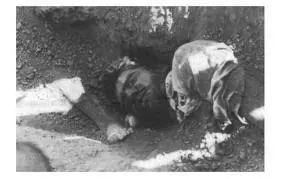
U.S. State Department spokesperson Morgan Ortagus on July 17 called on the international community to conduct independent investigations into the 1988 massacre of political prisoners in Iran, and to provide accountability and justice.
Following a fatwa handed down by Ayatollah Khomeini, then the regime’s supreme leader, in mid-July 1988, over several months more than 30,000 political prisoners, primarily affiliated with the People’s Mojahedin Organization of Iran (PMOI or MEK), were secretly mass executed after mock trials that lasted just five minutes. Their corpses were doused with disinfectant, packed in refrigerated trucks, and buried at night in mass graves across the country.
That summer, the United Nations was given credible information that a massacre was taking place secretly in Iran’s prisons. The UN did nothing to stop it.
Afterwards, when Amnesty International and other human rights groups documented thousands of executions of political prisoners that had taken place, the UN still failed to act.
Even when a 1988 audio tape of members of the “Death Commissions” and top officials discussing the massacre surfaced in 2016, the UN still refused to hold Iranian officials accountable.
The UN’s silence has only bred impunity in Tehran. Today one of those Death Commission members whose voice could be heard on the tape, Ebrahim Raisi, is Iran’s Judiciary Chief. Another Death Commission member, Alireza Avaie, is Iran’s Justice Minister.
These same officials are responsible for the numerous death sentences handed down in recent months to Iranians for taking part in the nationwide anti-regime Iran protests last November.
In 2016, a group of human rights lawyers founded Justice for the Victims of the 1988 Massacre in Iran (JVMI), a London-based NGO dedicated to ensuring accountability for the perpetrators and closure for the victims’ families.
We have interviewed dozens of survivors and obtained photographic evidence of 59 mass graves. We sent all our evidence, including two lengthy reports, to the UN hoping to trigger an investigation, but nothing happened.
Over the past four years, I personally met UN officials on numerous occasions at the UN Human Rights Council sessions in Geneva, and I handed them physical copies of our reports. Each time, they promised to look into the case. But they never did. In truth, the UN fears taking any action that would upset the regime in Tehran.
Click to read more
Members of the Senate sending messages to the #FreeIran2020 Global Summit
Donation
501 (c)(3) Tax deductible
Please,
Donate to Organization Of Iranian American Communities
Your donation will help OIAC advocates for a democratic, secular and non-nuclear government in Iran. Founded on the respect for human rights, gender equality, religious and ethnic tolerance, as wells as social, economic justice, and security for America. Our goal is to organize Iranian-American communities in the United States to promote these values.
Thank You,
http://www.oiac-us.com/donation/

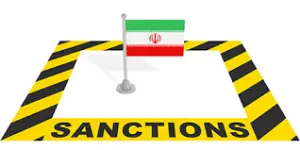 Expansion of the Scope of Iran Metals Sanctions Targeting Iran’s Nuclear, Military, and Ballistic Missile Programs and the IRGC
Expansion of the Scope of Iran Metals Sanctions Targeting Iran’s Nuclear, Military, and Ballistic Missile Programs and the IRGC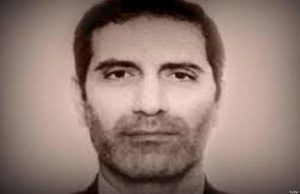 Iran Terrorist on Trial in Belgium
Iran Terrorist on Trial in Belgium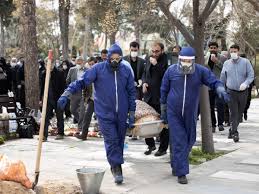 One person is dying of COVID-19 every seven minutes in Iran: state TV
One person is dying of COVID-19 every seven minutes in Iran: state TV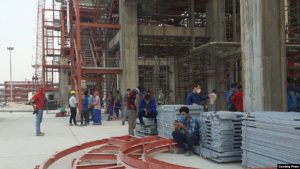 Strikes In Iran’s Oil Sector Continue And Expand To Other Industries
Strikes In Iran’s Oil Sector Continue And Expand To Other Industries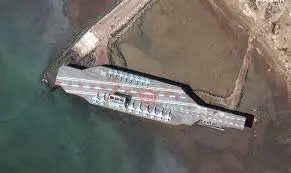 Iran Accidentally Sinks Fake Aircraft Carrier In Wrong Place
Iran Accidentally Sinks Fake Aircraft Carrier In Wrong Place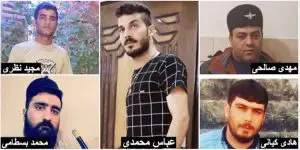 Iran Human Rights Monitor Monthly Report – July 2020
Iran Human Rights Monitor Monthly Report – July 2020



